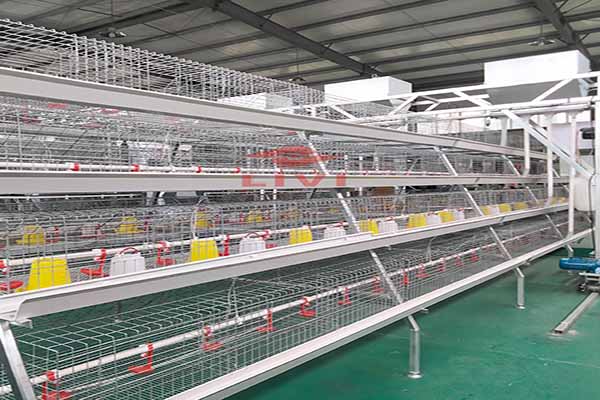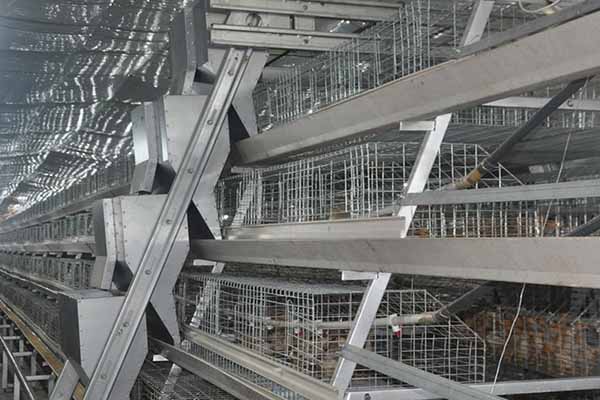
Intensive poultry farming demands meticulous control of stocking density to maximize production efficiency while safeguarding animal welfare. This article presents a comprehensive overview of effective strategies for managing poultry stocking density through optimized cage design and spatial arrangement, focusing primarily on brooding cages for young chicks. Emphasizing scientific data and practical insights, the discussion covers key parameters such as cage structure, ventilation, thermal regulation, and ease of management. It further differentiates solutions tailored for small-scale versus large commercial farms, supported by case studies and industry references. Special attention is placed on the Zhengzhou Livi Machinery A-type Brooding Battery Cage, highlighting its technological advantages and customizable options that empower poultry farmers to improve chick health and operational efficiency.
The foundation for effective management of poultry density lies in selecting cages that provide adequate space while facilitating efficient airflow and easy handling. For chicks aged between 1 to 4 weeks, optimal stocking densities range generally between 15 to 20 chicks per square foot, depending on breed and environmental conditions. Overcrowding risks heat stress, increased disease prevalence, and stunted growth, whereas underutilization impacts economic viability.
| Parameter | Recommended Value | Impact on Brooding |
|---|---|---|
| Stocking Density | 15-20 chicks/ft² | Balance between growth and welfare |
| Cage Layer Height | 25-30 cm for brooding | Facilitates heat retention & cleaning |
| Ventilation Rate | 8-12 air changes per hour | Ensures air quality and heat dissipation |
| Feed & Water Accessibility | One feeder/drinker per 15 chicks | Supports uniform growth and reduces competition |
The geometric design of brooding cages directly influences air circulation and spatial efficiency. Multi-layer configurations with adjustable layer heights allow customization according to flock size and farm size. For instance, large-scale operations typically favor 3 to 5-tier cage systems with elevated spacing (approximately 30 cm layer height) to ensure effective airflow, while smallholders may adopt simpler double-layer designs prioritizing management ease.
Materials selection also matters. The adoption of corrosion-resistant stainless steel or coated alloys increases cage lifespan, enhancing return on investment. Equally critical is the cage floor design: perforated floors optimize droppings removal, minimizing disease risk and promoting sanitary conditions.

Poultry density management is not a one-size-fits-all proposition. Small farms, managing fewer than 5,000 chicks, benefit from modular cage systems that allow gradual scaling and hands-on monitoring. Flexibility in cage dimension and layer height helps farmers adapt to seasonal changes and breed-specific needs.
Conversely, large industrial farms require robust, high-capacity systems with integrated automation for feeding and waste removal. The Zhengzhou Livi Machinery A-type Brooding Battery Cage excels here by offering custom configurations that suit demands from 10,000 chicks and beyond, with proven increases in feed conversion efficiency by up to 7% and mortality reduction by 12%, according to independent field trials.
| Farm Size | Recommended Cage Type | Key Benefits |
|---|---|---|
| Small (< 5,000 chicks) | 2-3 tier modular cages | Flexibility, ease of management |
| Large (≥ 10,000 chicks) | Custom A-type multi-tier battery cages | High efficiency, automation integration |
The A-type Brooding Battery Cage by Zhengzhou Livi Machinery features an advanced design prioritizing uniform ventilation, efficient heat dissipation, and ergonomic layout for minimal labor input. Key technical advantages include:
Real-world case studies reflect a noteworthy improvement in production indicators when adopting the A-type cages. For example, a poultry farm in Henan province reported a 10% rise in chick weight uniformity and a decreased incidence of respiratory diseases after switching to Livi’s solutions.

Q1: How does stocking density affect chick health?
Maintaining recommended stocking density ensures sufficient oxygen availability, reduces stress-induced disease, and promotes even growth.
Q2: Can cage height be adjusted post-installation?
High-quality systems like Livi's offer modular components allowing adjustment of layer heights based on seasonal temperature and flock age.
Q3: What are the benefits of battery cages over floor rearing?
Battery cages optimize space utilization, enhance biosecurity, and simplify management of feed and waste, leading to improved productivity.
Q4: How important is ventilation in multi-tier cages?
Adequate ventilation prevents heat accumulation and ammonia buildup, critical for chick comfort and respiratory health.
Optimizing poultry stocking density through scientifically designed brooding cages holds the key to balancing welfare with profitability. The combination of advanced cage architecture, precise environmental control, and modular scalability enables poultry farmers to maximize output without compromising chick health. Zhengzhou Livi Machinery’s A-type Brooding Battery Cage exemplifies innovation in this sector, delivering tangible productivity gains and tailored solutions for farms of varying sizes. Adopting such optimized systems and adhering to best practices positions poultry enterprises on a trajectory of sustainable growth.
Discover How Zhengzhou Livi Machinery Can Transform Your Poultry Farming Today

